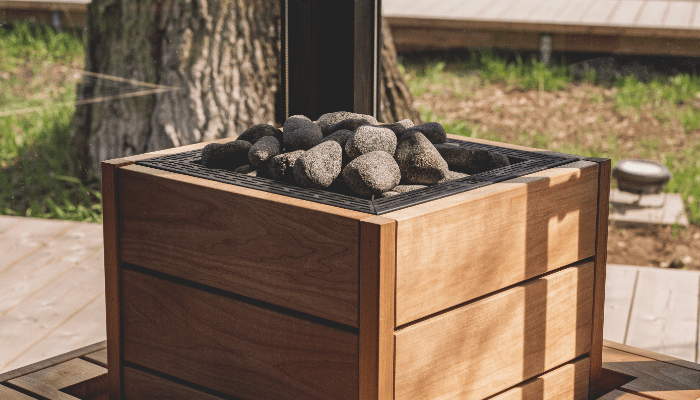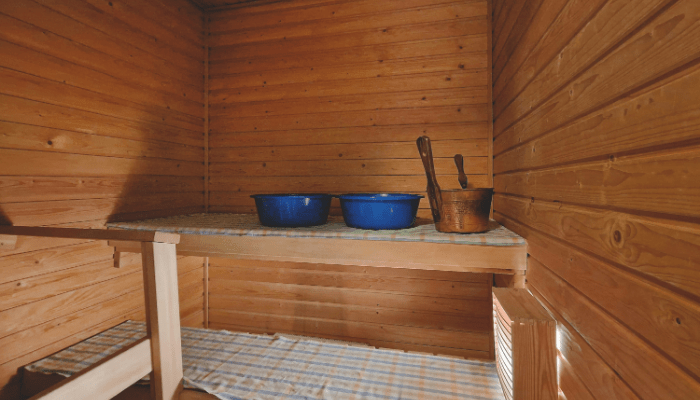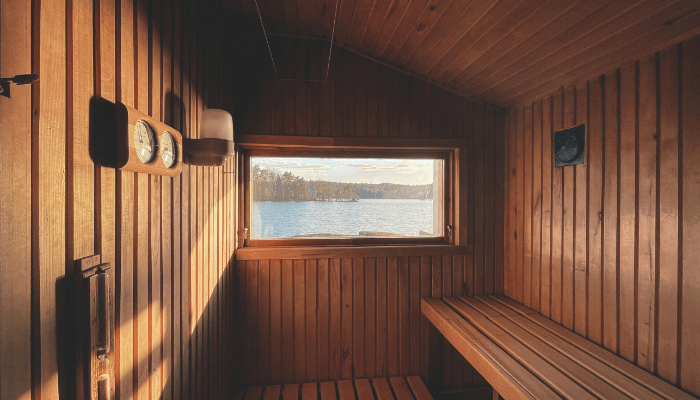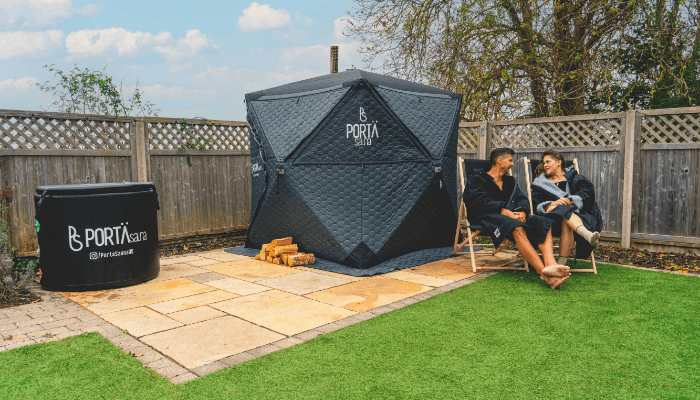A personal sauna for under $200? Sounds like a scam. But it’s not.
The portable sauna market is exploding. Search interest is up, Amazon is flooded with options, and influencers are sweating through sponsored posts faster than you can say “infrared.” The idea is seductive: unzip a tent in your living room, plug it in, sit down, and start detoxing while watching Netflix.
Sounds… convenient. But is it legit?
The truth is, portable saunas actually can work, but not all of them. Some deliver real heat, promote circulation, and aid muscle recovery. Others? They’re glorified space heaters in a sleeping bag.
So how do you separate the sweaty winners from the steamy flops?
This article breaks it all down. I’ll show you what portable saunas are really good for, what they’re not, and whether you should spend your money, or save it for an actual vacation. By the end, you’ll know exactly what to expect and how to pick the right type for your space, budget, and goals.
Let’s strip it down (towels on, please) and get into it.
Key Takeaways
- Portable saunas are compact, affordable, and easy to set up
- Ideal for apartments, beginners, and budget-conscious users
- Help support recovery, circulation, and stress relief
- Heat levels are lower than traditional saunas
- Regular cleaning is essential to avoid moisture issues
- Best value comes from models with reliable heat and easy storage
- Not for luxury seekers or those expecting spa-grade heat

What Is a Portable Sauna?
A portable sauna is exactly what it sounds like: a sauna you can fold up, stash in a closet, and set up in your living room without needing a contractor or a wood-burning stove. Most fall into three categories:
- Steam tents (zip-up fabric enclosures with a steam generator)
- Infrared tents (use infrared heating panels)
- Sauna blankets (look like heated sleeping bags you lie inside)
They’re compact, plug into a standard outlet, and cost a fraction of a built-in unit. Perfect for apartments, shared spaces, or commitment issues.
Key Benefits of Portable Saunas
Affordability
Portable saunas start around $150. A traditional sauna? Try $3,000 and up. If you’re price-sensitive or just sauna-curious, this is a low-risk entry point.
Convenience & Space-Saving
They pack down small. Setup takes five minutes. No tools, no drama. And when you’re done, just fold it up and hide it under the bed like a high-tech secret.
Health Perks
Sweating isn’t just for gym bros. Sauna use can help:
- Improve circulation
- Soothe sore muscles
- Support detox
- Boost mood and relaxation
Sure, the science varies depending on the type of heat used (infrared vs steam), but even mild heat exposure gets the blood pumping.
Recovery & Stress Relief
Professional athletes use heat therapy to recover faster. You don’t need to be training for a marathon to benefit. Twenty minutes in a personal sauna can unwind your mind and body faster than scrolling wellness tips on your phone.

The Drawbacks (What You Should Know)
Not as Hot as the Real Thing
Let’s be honest: these won’t hit 90°C like a proper wood-fired sauna. Most steam units peak around 45-50°C. Infrared models heat the body more than the air, which is effective, but doesn’t feel as intense.
Durability Is Hit or Miss
Some models feel sturdy. Others feel like a tent your toddler might destroy in two minutes. Materials range from nylon and plastic to thicker, insulated fabric. Price often correlates with build quality.
Cleaning Can Be a Chore
Steam = moisture. Moisture = mold risk. You need to wipe everything down after every session. If you’re too lazy to clean your blender, this could be a dealbreaker.
It’s Not the Spa
If you’re expecting cedar walls, soft music, and eucalyptus towels, manage your expectations. This is a functional wellness tool, not a luxury experience.
Who Portable Saunas Are Best For
- Apartment dwellers with no room for a full setup
- Fitness fans who want fast muscle recovery
- People exploring sauna therapy before investing big
- Budget-conscious wellness enthusiasts
- Anyone who wants to sweat but hates the gym
Not Ideal For:
- Heat purists who crave 90°C+ sessions
- Luxury seekers
- People unwilling to do regular cleaning

Cost vs Value: Is It Worth It?
Let’s talk numbers. Portable saunas range from $150 to $500. That’s less than most spa memberships, and far less than a traditional install. If you use it 2–3 times a week, it pays for itself in a couple of months.
And it’s not just the money. It’s the time you save. No driving to the spa. No scheduling. Just plug in, sweat, and go about your day.
Best Value Options:
- Steam tents with quick boil times
- Infrared blankets with adjustable heat settings
- Units with zippers you can actually open without a wrestling match
5 Best Portable Saunas to Buy Right Now
If you’re ready to commit to a good sweat, here are some of the top-rated portable saunas people actually love — not just review bots on Amazon.
1. SereneLife Full Size Portable Steam Sauna
- Type: Steam tent
- Why it’s great: Reliable steam output, roomy design, foldable chair included
- Price: Around $250
- Best for: Beginners who want that real steam room vibe at home
2. Sun Home Infrared Sauna Blanket
- Type: Infrared blanket
- Why it’s great: High-end construction, low EMF, adjustable heat
- Price: Around $499
- Best for: Infrared fans who want to lie flat and sweat in silence
3. REVIIV Far Infrared Sauna Blanket
- Type: Infrared blanket
- Why it’s great: Lightweight, high heat range, super portable
- Price: Around $350
- Best for: Travel-friendly heat therapy without bulk
4. HigherDose Infrared Sauna Blanket V3
- Type: Infrared blanket
- Why it’s great: Premium build, low-EMF design, cult following
- Price: Around $599
- Best for: People who want spa vibes without leaving the house
5. Durherm Portable Personal Steam Sauna
- Type: Steam tent
- Why it’s great: Budget-friendly, quick to heat, easy to store
- Price: Around $150
- Best for: Budget-conscious buyers who want a no-frills sweat

Alternatives to Consider
Sauna Blankets
If you want the smallest, simplest option, go blanket-style. They’re infrared, lie-flat, and great for people with limited space.
Infrared Panels
Want more heat intensity? Portable infrared panels can turn a small room into a hot box. Takes more setup, but more power.
Gym or Spa Memberships
If you want premium heat and ambiance without buying anything, this is still a solid route. It’s less private, more social, and you can cancel any time.
Outdoor Sauna Tents
Have a backyard? These give you the portable benefit with a bigger footprint and better heat. Just be ready for some setup.
Conclusion
Here’s the bottom line: portable saunas aren’t magic, but they’re not a gimmick either, if you buy the right one for the right reasons.
They make sense for some people. If you live in a small apartment, don’t want to commit to a $5,000 built-in sauna, or need quick recovery tools after workouts, they’re a smart move. Setup is simple. The benefits? Real. But you’ll need to manage expectations. This is not a Finnish log cabin.
Still, for $200-$500? That’s less than a year of gym memberships. Less than a monthly massage habit. And definitely less than the price of burnout.
If you treat it like a tool, and not a miracle, you’ll probably love it.
If you treat it like a luxury spa, prepare to be slightly sweaty and slightly disappointed.
Your move: If you want convenience, budget-friendliness, and low-effort self-care, a portable sauna might just be worth it.
And hey, if it gets you to sit still for 30 minutes, that alone might be worth the price.
Want the benefits of heat therapy without stuffing a plastic pod in your living room?
We design real outdoor wellness spaces with everything from natural pools to regenerative garden zones made to last and made for you. Explore our services today.
FAQ
Is a portable sauna better than a regular sauna?
A portable sauna can be better than a regular sauna for convenience, cost, and space-saving. It heats up faster, requires no permanent installation, and is ideal for small homes or apartments. However, traditional saunas offer higher heat and humidity levels, which some users prefer for deeper sweating and relaxation.
What are the negatives of a sauna?
Common negatives of sauna use include dehydration, dizziness, and overheating, especially with prolonged exposure. People with heart conditions or low blood pressure should consult a doctor before use. Saunas may also dry out skin or cause fatigue if used too often or without proper hydration and cooldown periods.
Are portable saunas expensive to run?
Portable saunas are generally inexpensive to run. Most use between 1,000 to 1,500 watts, similar to a hair dryer costing around $0.20 to $0.50 per session, depending on local electricity rates. Compared to traditional saunas, they consume less energy and are more cost-effective for personal or frequent use.
How long should I sit in my portable sauna?
You should sit in a portable sauna for 15 to 30 minutes, depending on your tolerance and experience level. Beginners may start with 10 to 15 minutes and gradually increase. Always stay hydrated, listen to your body, and exit immediately if you feel lightheaded or uncomfortable.



